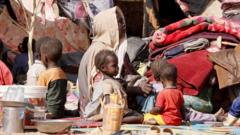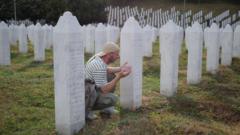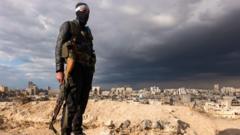In early March, Baniyas became the stage for a tragic episode in Syria, as armed groups targeted civilians in a brutal killing spree that left over 1,600 dead, highlighting the precariousness of the nation's post-civil war peace.
The Fragile State of Peace in Post-Civil War Syria

The Fragile State of Peace in Post-Civil War Syria
Amidst the chaos of Baniyas, a recent sectarian massacre reveals the ongoing instability in Syria's societal fabric, where thousands of civilians, particularly from the Alawite minority, remain vulnerable.
The Syrian city of Baniyas, which was nearly deserted in early March, displayed signs of catastrophic violence. Streets were lined with burnt vehicles, while stores were vandalized, their windows shattered and doors forced open. Emergency workers had repurposed an abandoned furniture store into a makeshift morgue, overflowing with body bags, as they responded to the aftermath of horrific killings that rocked the city.
Witnesses reported that armed groups moved through the town, indiscriminately executing civilians—many of whom belonged to the Alawite sect—over a span of three days. Eyewitness accounts indicate that gunmen sought out victims house by house, resulting in a death toll surpassing 1,600, overwhelming local emergency services. Citizens expressed desperation, urging helpers to locate missing relatives, with harrowing information about additional bodies potentially lying in public areas uncollected.
This violent episode starkly illustrates the ongoing fragility of peace in Syria, where the new rebel-led government struggles to assure safety for those from the Alawite background, previously allied with the Assad regime. With much of Baniyas left in ruins, the community's deep-seated tensions became alarmingly evident, casting a shadow over Syria's path towards lasting stability and recovery, nearly fourteen years post-civil conflict.
Witnesses reported that armed groups moved through the town, indiscriminately executing civilians—many of whom belonged to the Alawite sect—over a span of three days. Eyewitness accounts indicate that gunmen sought out victims house by house, resulting in a death toll surpassing 1,600, overwhelming local emergency services. Citizens expressed desperation, urging helpers to locate missing relatives, with harrowing information about additional bodies potentially lying in public areas uncollected.
This violent episode starkly illustrates the ongoing fragility of peace in Syria, where the new rebel-led government struggles to assure safety for those from the Alawite background, previously allied with the Assad regime. With much of Baniyas left in ruins, the community's deep-seated tensions became alarmingly evident, casting a shadow over Syria's path towards lasting stability and recovery, nearly fourteen years post-civil conflict.




















